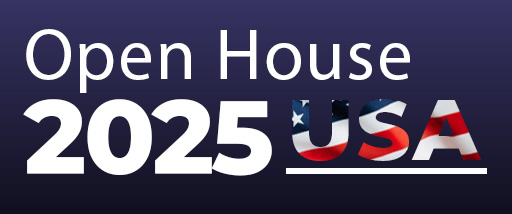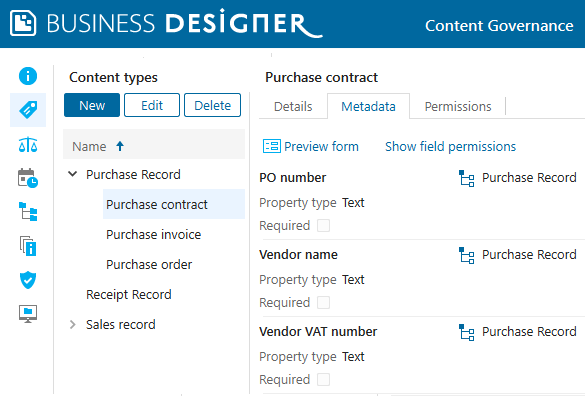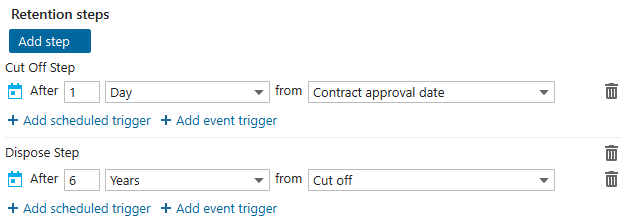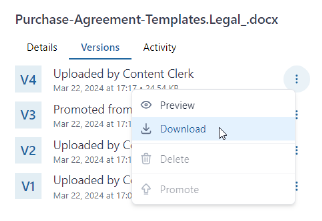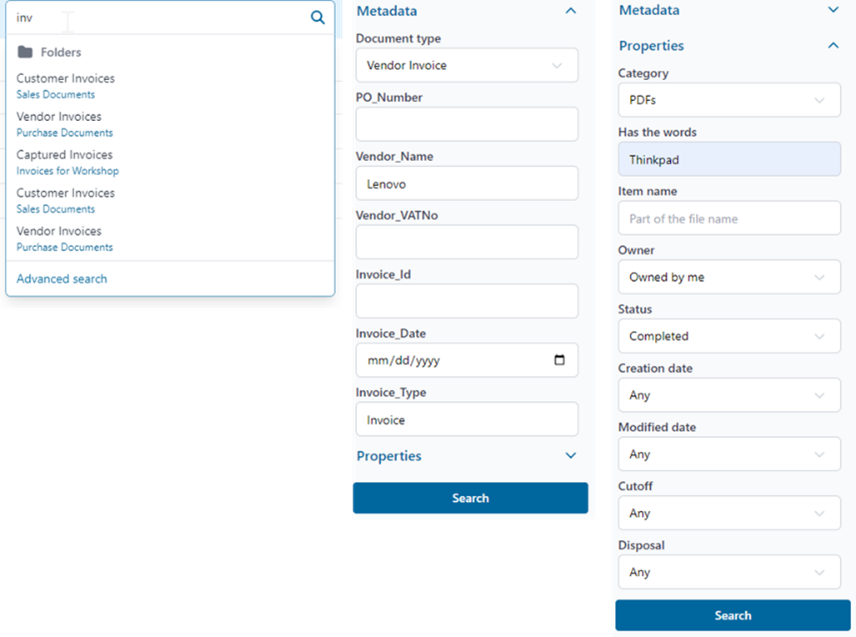Create dedicated spaces for different departments and projects, with clear folder structures for easy access.
Papyrus: Streamline Operations & Achieve Compliance
Go paperless, boost productivity, and ensure compliance with
Papyrus’ Content Governance solution. Integrate seamlessly with
our digital transformation suite for a holistic approach.
- Eliminate paper for efficiency & accessibility
- Automate tasks to free up valuable time
- Meet industry regulations with confidence
Business Designer Content Governance
Organizations must adapt faster to changes and embrace innovation. IT on the other hand has limited resources and budget, being responsible for operations and dealing with technical debt. Papyrus Business Designer Content Governance empowers your business users, or “citizen developers,” to take control.
-
Organize content intuitively
-
Simplify document classification
Define metadata fields (think categories and tags) to easily categorize documents and ensure consistent information capture.
-
Automate retention policies
Set automatic rules for how long different types of documents need to be retained, ensuring compliance with regulations.
Space and file plan templates
Space templates define the initial visibility of a space and its members with their access permissions. They reference a File plan that defines how to organize content. At folder level defaults can be set and automation of actions be configured, e.g. to move a document into another folder when metadata is updated to a certain value.
Content type and metadata templates
Content type templates are organized in a classification taxonomy. They reference a retention schedule, specify default access permissions and metadata elements. Each element specifies if it’s required, contains personidentifiable information (PII), its retention, searchability, and who can access it.
Retention schedule templates
Certain types of documents must be kept within an organization for a legally mandated number of years. For example, invoices must be retained for seven years in the US (but 10 years in Germany) before their deletion is allowed.
Retention schedule templates define steps like cut-off, transfer, and disposition. Steps can be triggered by events or specific dates (invoice date). The same retention schedule can be applied to multiple content or record types.
Spaces
Spaces empower business users to manage records and collaborate on content with colleagues and external users. These secure document spaces can be public, protected, or private, catering to different needs of departments, teams, and projects.
-
Securely Collaborate
Permission based access to files and actions
-
Automate Tasks
Assign tasks such as signing and approval to users
-
Manage Versions
Keep track of changes and prevent duplication
-
Search and Find
Find files by name, metadata or keywords
Version management
Maintaining document integrity is understanding what has changed between versions and ensuring users are only editing the most current version. Papyrus creates a fingerprint to prevent uploading duplicate versions and stores older versions automatically which can be viewed and promoted to the actual version if needed. Locking “checked out” documents keeps changes from occurring and maintains an accurate record of who changed what.
Search
- Fuzzy search on name of file, folder and space
- Metadata search with filter options
- Full text keyword search (ocr on images)
- File properties search
- Cutoff time
- Disposal time
- Status archived, incomplete or complete
- Category such as pdf, images, documents, spreadsheets, video, etc.
Streamlined workflows
You can create automation rules for a folder, in much the same way that you might apply rules to your emails to automate repetitive actions on files such as moving the file to a different folder, rendering a watermarked PDF version, setting metadata values, or changing the permissions.
In other situations, you may want to request a colleague or department to act on a file such as updating metadata or uploading a new version before a due date. Requests on files appear in the user’s incoming requests folder.
Complex workflows can be designed using the Papyrus Business Designer for Adaptive Case Management.
Document actions
Empowers users with permission based actions:
- view, download, rename, edit
- set permissions and clearance marks
- upload new versions, promote previous versions
- move, link, share, favorite, and comment
- notarize, archive, or declare as record
Secure collaboration
In today’s digital workplace, secure collaboration is essential for efficient teamwork while safeguarding sensitive information. The Papyrus platform offers a robust security foundation that empowers collaboration while addressing data confidentiality, integrity, and access control.
Secure document signing
Papyrus Sign empowers users with secure e-document signing options. Choose from various signature levels, including standard digital signatures and qualified electronic signatures for the highest level of legal validity. Define custom signing workflows that combine blockchain notarization for tamper-proof verification or integrate with third-party signing services like DocuSign© to ensure legal proof and authenticity for your documents.
Auditing
Maintain complete control over your documents with Papyrus’ robust auditing and tracking features. Track the entire lifecycle of files with a detailed record of every access, edit, download, sharing, and more. It allows for a complete audit trail and easy reconstruction of document history. Access these audit logs conveniently within the Digital Workplace or export them in common formats like CSV for further analysis using Papyrus Reporting.
Content services integration
Content services are the cornerstone of business operations and hybrid-working scenarios. Papyrus delivers:
- Customer Communication Management consolidates and handles all types of documents and output channels.
- Intelligent Document Processing delivers AI-powered document capture, classification, and data extraction.
- Content Governance provides workflow, additional blockchain notarization, certified digital signature, retention periods, and access control.
